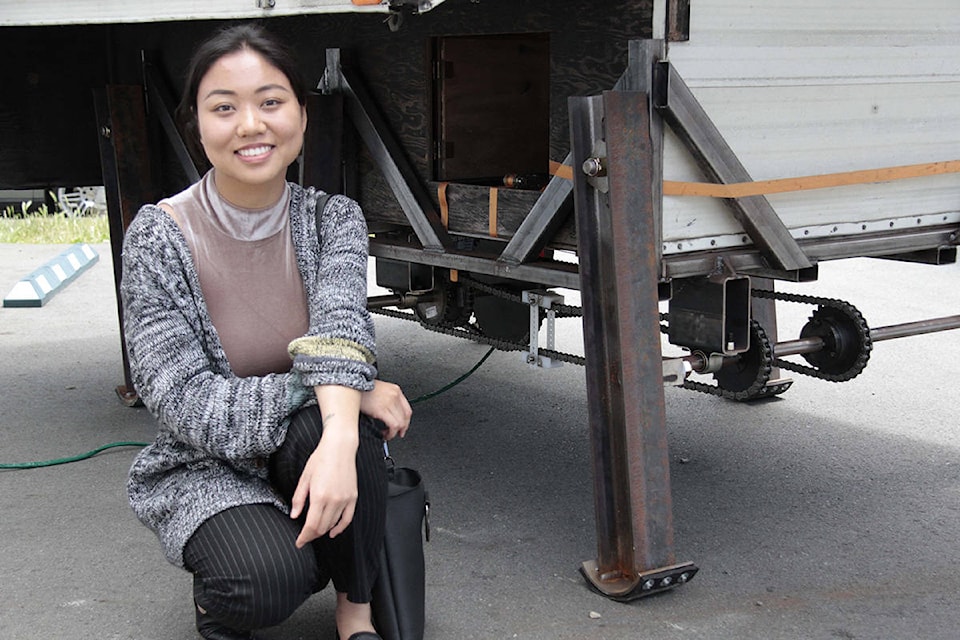Tim Collins/Victoria News
For the third year in a row, Ray Brougham and his company, Rainhouse Manufacturing (formerly Prototype Equipment Design) hosted their Design Challenge.
The event sees teams of innovative young people come together to showcase their inventions and go head to head to compete for the annual title of most interesting/ innovative product.
“The truth is, all of these teams are engaged in separate competitions within their own disciplines,” said Brougham. “This competition is really just an opportunity to show off what they’ve done and share ideas with like-minded young people.”
Brougham’s company is well suited to host an event of this kind, as the Victoria firm is itself well established as a major innovator and problem solver in the high-tech engineering world. Since their start in 2000, Rainhouse has solved engineering challenges in the defence, marine, technology, medical and scientific industries.
“Like these young men and women, we don’t back down from a challenge. It’s why we love helping them develop their ideas and then assist in bringing them to life,” said Brougham.
The contenders in the competition were as diverse and impressive as one could imagine.
Brice Edwards and Austin Wollf’s entry of a satellite prototype is one example. They had also entered it into the Canadian Satellite Design Challenge, where teams of university students build a small satellite, with the winning craft eventually launched into space.
“Our prototype uses pyrolitic graphite in its design. When heated, its magnetic properties change and it functions as a magnetic attitude control system, utilizing the magnetic fields of surrounding bodies in space,” explained Wollf. It’s a system described by the team’s mentor, James Harrington, as Star Trek come to life.
Other entries were no less impressive.
UVic Aero Drone, a group that has developed several unmanned aerial drones that can be used, amongst other purposes, to aid in search and rescue efforts or deliver urgent medical equipment in minutes. Another group, AUVic Submersible, has developed an underwater vehicle that can operate at depth without the need of a tether for control and movement.
But the winner of this year’s competition was unique by virtue of having no immediate technological or engineering application in the real world. Instead, it was a work of art.
Xiao Xue is a UVic Fine Arts graduate who gathered her inspiration from a close friend who is an amputee.
“I saw that after he lost his leg he was obsessed with different prosthetics, but gave no thought to the limb he’d lost” she said. “It seemed to be a metaphor for a society where we cast things aside, treating them as parasites that, once their removed from the host, no longer have any relevance.”
Her entry was an uninstalled slide-in truck camper. She designed and built a system to allow the camper to walk on its own, ostensibly in search of a truck to make its home.
“Xiao’s work shows a unique blending of art and technology. It’s a remarkable application of imagination,” said Brougham.
editor@vicnews.com
